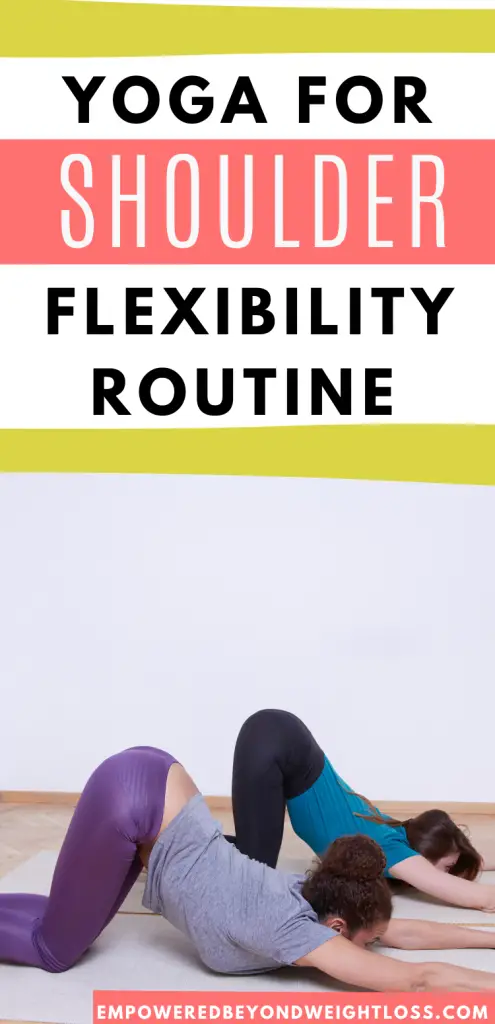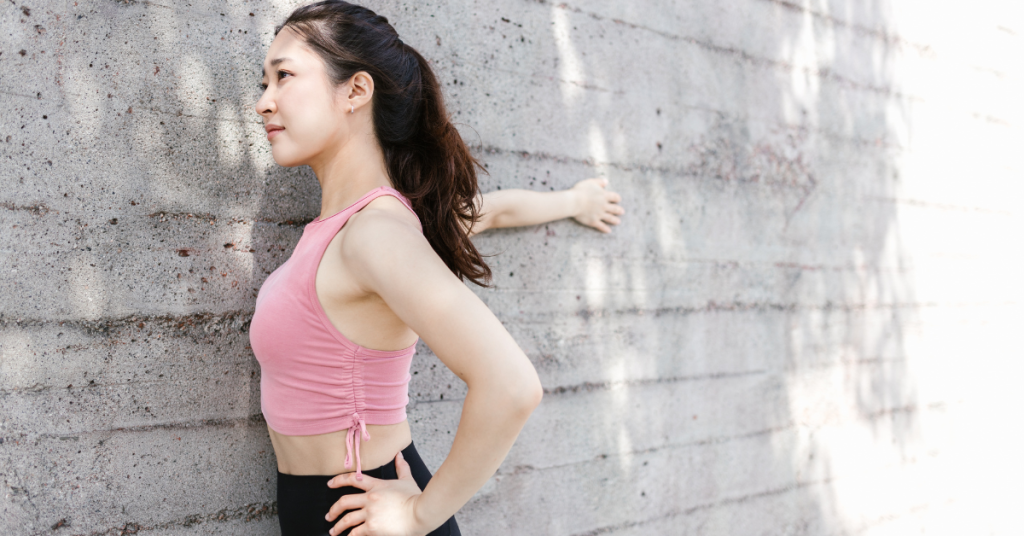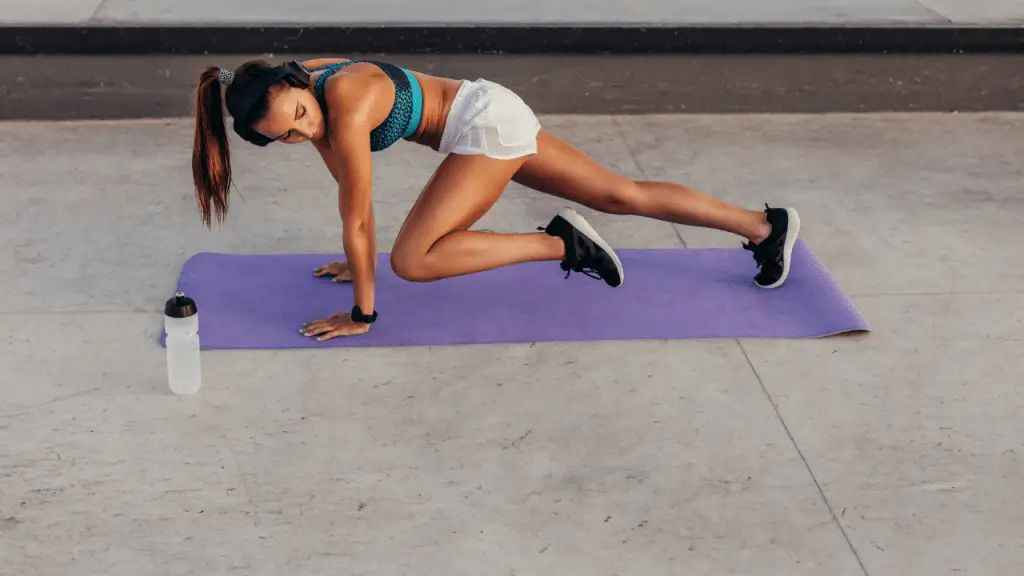Using yoga for shoulder flexibility will not only improve your posture but will also change your perspective on the world. Why? Because how you carry yourself reflects how you perceive the world and vice versa.
Yoga for Shoulder Flexibility
How should you use yoga for shoulder flexibility? As usual, we will use some of the most effective yoga poses for shoulder flexibility and ensure we hold them for just enough time. This helps create a yoga sequence that stretches your shoulder while relaxing. You may know that my favorite way to do yoga is to use more intense routines in the morning, like my core workouts, and stretch in the evening.
Here are some stretches you will find in today’s routine:
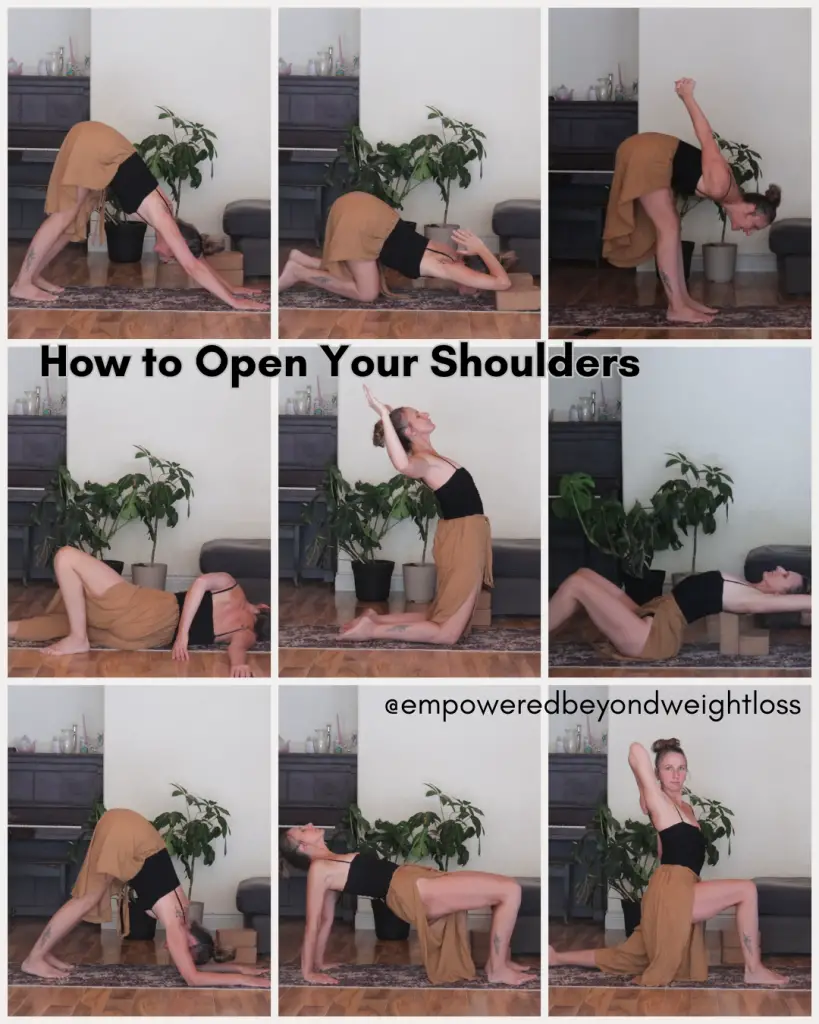
Your full-length yoga for shoulder flexibility follow-along video:
Yoga Poses for Shoulder Flexibility
Here are seven effective yoga poses for shoulder flexibility without specific duration recommendations and with Fish Pose instead of Eagle Pose:
Cow Face Pose (Gomukhasana)
- Begin in a comfortable seated position with your legs extended.
- Cross your right knee over your left thigh, stacking your knees.
- Reach your right arm behind your back and your left arm overhead, attempting to clasp your fingers together behind your back.
- Use a strap or cloth if your hands don’t meet.
- Switch sides after holding the pose.

Thread the Needle Pose (Parsva Balasana)
- Start on your hands and knees in a tabletop position.
- Slide your right arm under your left arm, lowering your right shoulder and ear to the mat.
- Twist your upper body gently to the left.
- Switch sides after holding the pose.
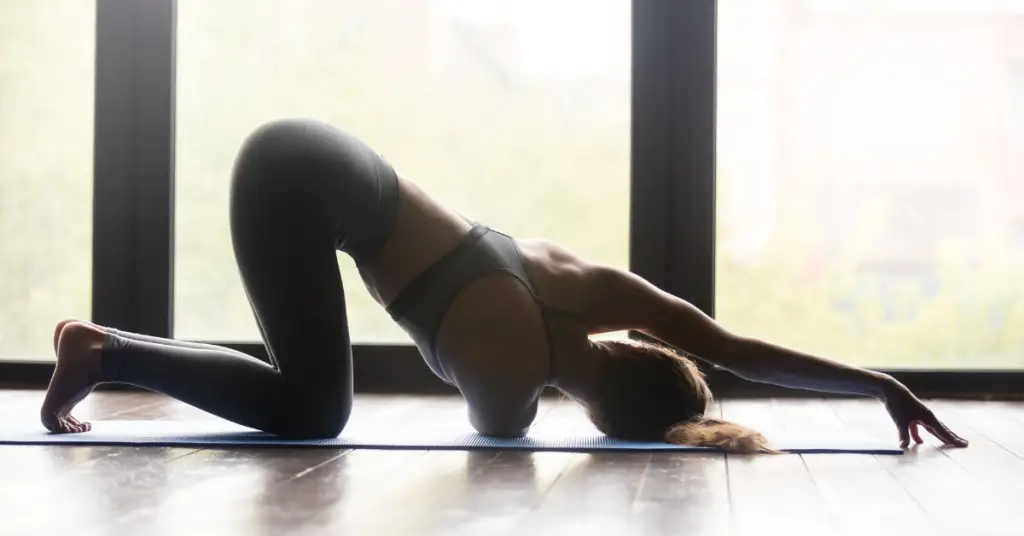
Fish Pose (Matsyasana)
- Lie on your back with your legs extended and arms at your sides.
- Place your hands underneath your buttocks, palms down.
- Press into your forearms and lift your chest, arching your back.
- Allow your head to gently drop back, creating a stretch in your shoulders and chest.
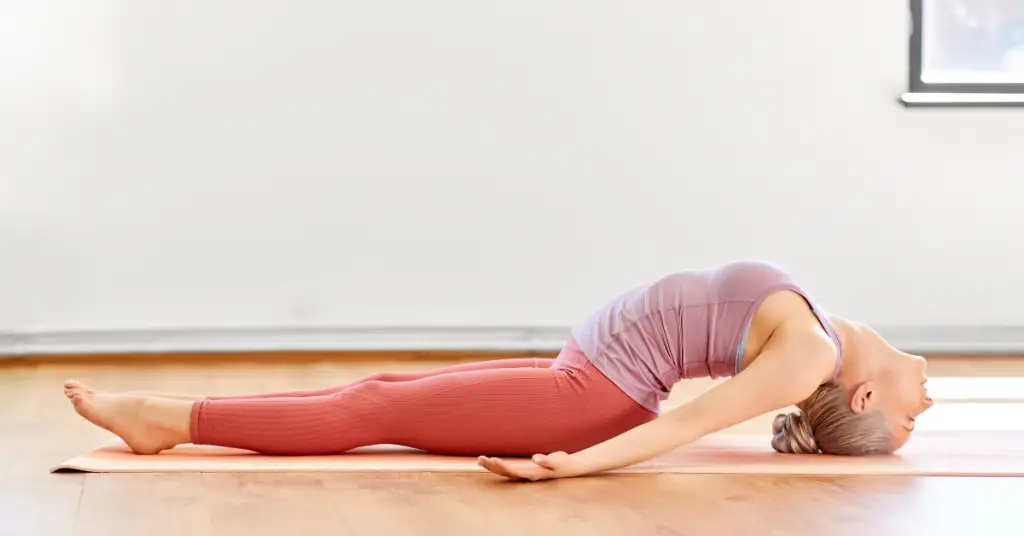
Puppy Pose (Uttana Shishosana)
- Start in a tabletop position with wrists under shoulders and knees under hips.
- Walk your hands forward while keeping your hips above your knees.
- Lower your chest and forehead toward the floor, stretching your shoulders and upper back.

Side-Lying Shoulder Stretch
- Lie on your left side with your legs extended and your head supported on your left arm.
- Bend your right knee and place your right foot on the floor behind your left leg for stability.
- Reach your right arm straight overhead and let it rest on the floor.
- Use your left hand to gently push your right arm further, creating a stretch in your right shoulder.
- Switch to your right side to stretch the left shoulder.
Reverse Plank (Purvottanasana)
- Sit with your legs extended in front of you and your hands behind your hips, fingers pointing toward your feet.
- Press into your hands and lift your hips and chest upward, creating a reverse plank position.
- Keep your legs engaged and flex your feet for stability.
- Feel the stretch in your shoulders and the front of your body.
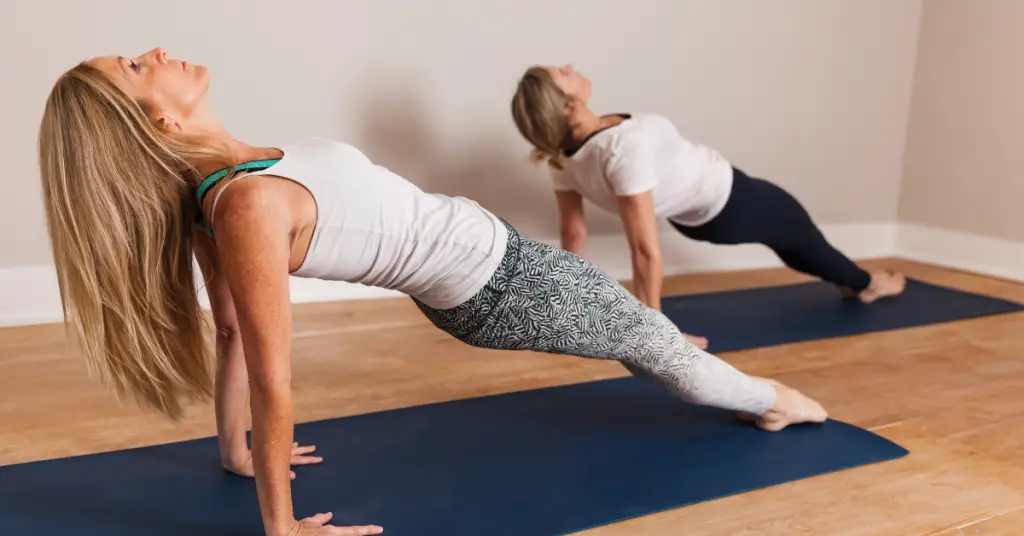
Practice these poses regularly to improve shoulder flexibility and overall upper body mobility. Always practice with awareness and modify as needed to suit your individual flexibility and comfort levels.
Using Your Arms for Shoulder Flexibility
You don’t have to try many yoga poses for shoulder flexibility to see results. You can stretch your shoulders by finding a bind in almost any pose.
Here are binds that will stretch your shoulders. Use these binds in various yoga poses:
1- The cow face bind: Clasp your hands behind your back like in cow face pose but try it in a lunge, on your knees, or in mountain pose.
2- The bound side angle bind: Bring your lifted hand to the crease of your thigh to assist in stretching your shoulders. I love the bound side angle pose, but you can also use this bind in forward fold and pyramid pose, for example. Try my Yoga Side-Body Stretch for Better Posture and Breathing for more examples.
3- Behind your back clasp: Clasp your hands behind your back in a forward fold, cobra, or a lunge to feel a nice chest opening.
I also love to cactus my arms to find more shoulder opening.
The Posture/Mindset Connection
Your posture and mindset are interconnected and can significantly impact each other. Here’s how your posture affects your mindset and vice versa:
How Your Posture Affects Your Mindset:
- Confidence: Good posture can convey confidence. When you stand tall with your shoulders back and your head held high, you signal to your brain that you are confident and in control. This can boost your self-esteem and make you feel more empowered.
- Positive Thinking: Research has shown that maintaining an upright posture can improve mood and increase positive thinking. Sitting or standing straight may make you feel more optimistic and capable of handling challenges.
- Reduced Stress: Proper posture can help reduce stress and anxiety. Slouching or hunching over can create tension in your neck and shoulders, which may contribute to feelings of stress. Maintaining good posture can help alleviate this tension and promote relaxation.
- Energy Levels: Slouching and poor posture can lead to feelings of fatigue. Sitting or standing straight allows for better oxygen flow, increasing energy levels, and overall alertness. I think that’s one reason why backbends are so energizing! I had no idea when I started doing yoga, but the first time I practiced backbends, I couldn’t believe the instant difference! Try the routine in Benefits of the Wheel Pose in Yoga and How to Get Started.
How Your Mindset Affects Your Posture:
- Stress and Anxiety: A stressed or anxious mindset can lead to poor posture. When you’re feeling overwhelmed, you may be more likely to slouch or hunch over, which can exacerbate feelings of tension and stress.
- Self-Perception: Your self-perception can influence your posture. If you have a negative self-image or low self-esteem, you might be more inclined to adopt a closed-off posture, which can further reinforce negative feelings.
- Motivation and Determination: A positive and determined mindset can encourage better posture. When you’re motivated and focused on your goals, you may naturally stand or sit more upright, projecting a sense of purpose and determination.
- Emotional Well-being: Your emotional state can impact your physical posture. For example, feeling happy and content makes you more likely to exhibit open and relaxed body language. Conversely, feelings of sadness or anger can manifest as slumped shoulders and a closed-off stance.
It’s important to recognize this bidirectional relationship between posture and mindset. By consciously maintaining good posture, you can positively influence your mindset and emotional state. Similarly, cultivating a positive mindset through mindfulness, meditation, or therapy can improve posture and physical well-being. Good posture and a positive mindset can improve overall mental and physical health.
In Summary
In conclusion, incorporating yoga for shoulder flexibility into your routine improves your posture and enhances your mindset. Additionally, the mental focus and mindfulness cultivated through yoga can positively impact your mindset, promoting a sense of calm and balance. If you’re ready to embark on a journey towards improved shoulder flexibility and a positive mindset, join my 5-Day Yoga Habit Challenge. Take the first step towards a healthier body and mind today.

